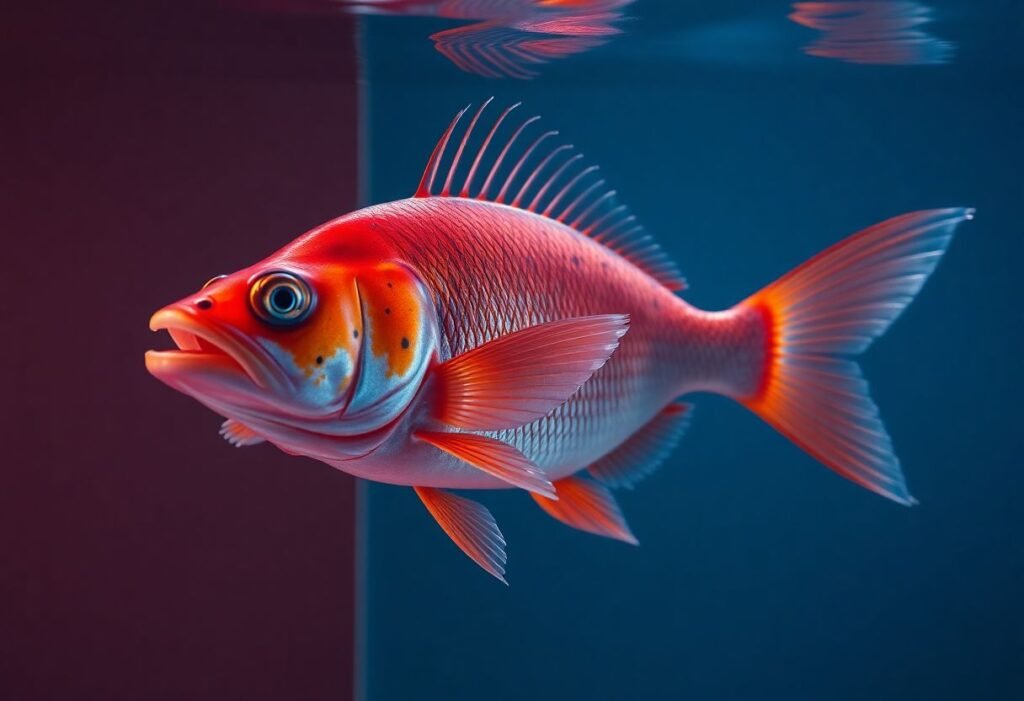The discovery of self-awareness in animals has profound implications for our understanding of intelligence and behavior. Recent studies involving the bluestreak cleaner wrasse have revealed unexpected cognitive abilities, shedding light on an often-overlooked aspect of marine life.
Significance of the Mirror Test in Animal Cognition
The mirror test is a widely recognized method used to assess self-recognition in animals. Passing this test indicates a level of self-awareness that transcends basic instincts. The bluestreak cleaner wrasse, a small reef fish, has successfully demonstrated this capability, suggesting the presence of sophisticated cognitive traits in this species. This achievement invites further exploration into the complexities of fish behavior and the possibility that self-awareness is not limited to mammals or birds, but is also present in lesser-known classes of vertebrates, paving the way for more comprehensive studies on animal intelligence.
The Behavior of the Bluestreak Cleaner Wrasse
This fascinating fish, known for its striking colors and intelligent behavior, has shown that it is capable of analyzing its own reflection. Researchers observed that when presented with a mirror, the bluestreak cleaner wrasse did not merely recognize itself but also exhibited complex behaviors indicating it could gauge its own size and condition. Such self-assessment plays a vital role when defending territory. By evaluating its reflection, the fish can determine whether it can engage in confrontations with intruding fish, minimizing unnecessary risks, and demonstrating adaptive behavior in marine environments.
Implications for Understanding Intelligence Across Species
The revelation of self-recognition in the bluestreak cleaner wrasse expands our understanding of intelligence across various species. Traditionally, self-awareness was considered a trait unique to higher mammals, such as elephants, great apes, and dolphins. However, these findings challenge this perspective and prompt a reevaluation of cognitive abilities in fish and other non-mammalian animals. This shift in understanding encourages scientists to investigate cognitive markers in other species, potentially uncovering a spectrum of intelligence that exists beyond conventional classifications.
Applications in Marine Behavior Studies
Understanding self-awareness in the bluestreak cleaner wrasse is crucial for marine behavior studies. This knowledge can redefine our approach to studying fish interactions, communication, and social structures within their environments. By integrating these cognitive perspectives into research, marine biologists can develop more comprehensive strategies for conservation and habitat management, potentially ensuring healthier ecosystems. It also enhances our understanding of food chains and predator-prey dynamics, as cognitive behaviors greatly influence these relationships.
Future Research Directions
The groundbreaking results from the bluestreak cleaner wrasse study open numerous avenues for future research. Scientists may explore the neural mechanisms underlying self-recognition in fish, examining how these cognitive processes evolved. Comparative studies between self-aware and non-aware species can also yield insights into the evolutionary pathways of intelligence. Vocal communication among marine species and its relationship with cognitive skills represents another promising field that can benefit from these findings.
Conclusion: Reassessing Animal Intelligence
The evidence of self-awareness in the bluestreak cleaner wrasse signifies a pivotal moment in the study of animal intelligence. This ballpark figure extends the boundaries of cognitive research and underscores the need for a deeper appreciation of the complexities present in marine life. As such discoveries continue to emerge, they reshape our understanding of the minds of animals and their respective places in the ecosystem. The bluestreak cleaner wrasse represents a compelling case study for the ongoing exploration of intelligence among diverse life forms in our oceans.





















